

Module 3: Force
It’s time to meet Sir Isaac Newton to understand his first law of motion, explore the second step in the engineering design process and design your rocket.
Newton’s laws
The science behind rocketry
Sir Isaac Newton was a revolutionary thinker. Even though he was born hundreds of years ago, his incredible discoveries are still used in rocketry today.
He came up with three laws of motion. Using these laws – and a little maths – we can understand a lot about how an object moves through space.
You’re going to find out about his first law and then learn how it relates to rocketry.
Newton's first law
An object will remain at rest (not moving) or keep moving forever at the same speed and in a straight line unless there is another force acting on it.

This means your rocket will not lift off the ground without any force acting on it.
Remember! Force is a power that causes an object to move or changes an object’s movement.
Forces of flight
The forces your rocket will experience during flight are:
Thrust: The force that makes your rocket move through the air.
Drag: The force on your rocket opposite to its movement through the air.
Weight: The force of gravity on your rocket. When you drop something that weighs a lot, it will fall back to the ground faster than a feather dropped at the same height.
Lift: The force that helps to keep your rocket stable.
Mission Brief 5: Forces of flight
Work with your crew to see if you can identify each force and how they act on a rocket.
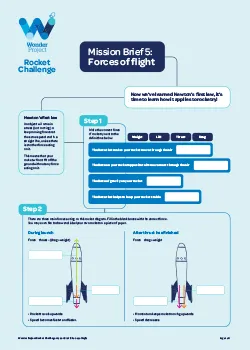
Ngā tohutohu mō te Whāinga 5: Ngā tōpana rerenga
Me mahi ngātahi koutou ko tō rōpū ki te tautohu i ia tōpana me te āhua o te pā a ngā tōpana ki te tākirirangi.
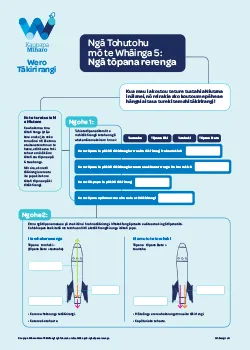
Imagine
Get ready to launch into the second step of the engineering design process – imagine.
In the first step of the engineering design process, we figured out the problem we were trying to solve.
The second stage is about imagining some possible solutions to your problem. During the first test flight we learnt how to launch a basic rocket, but how do we make the rocket fly super high?
We’re going to imagine some rocket designs that will help improve your rocket’s flight. You might like to ask yourself:
I wonder how our rocket will look? What feature could I add to make our rocket fly higher? How will I make sure our rocket lands safely back to Earth?
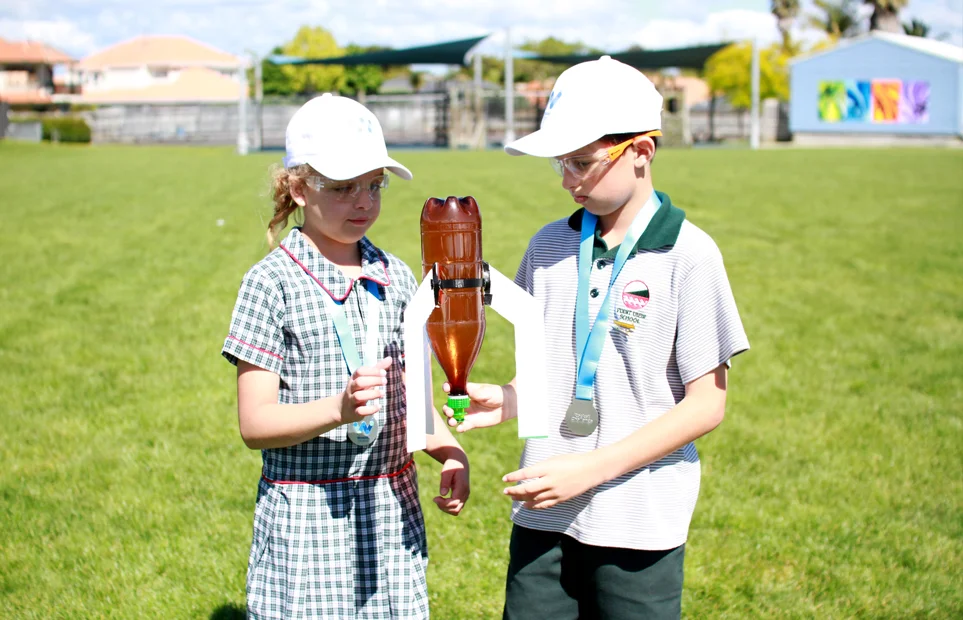
Mission Brief 6: Imagine
Use your imagination to brainstorm some rocket ideas on paper. You’ll be able to review and improve on this design later.
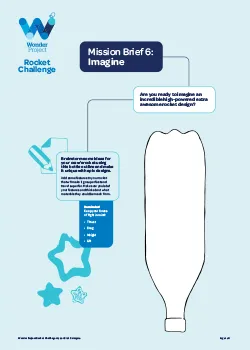
Ngā tohutohu mō te Whāinga 6: Kia kaha te pohewa
Tukua ō pohewatanga kia rere hei ohia manomano i ētahi whakaaro mō tētahi tākirirangi ki runga i te pepa. Ka āhei koutou ki te arotake me te whakapai ake i tēnei hoahoanga ā muri ake nei.
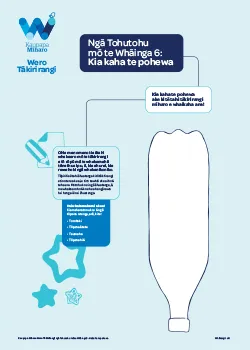
It’s planning time
STEM superstars all have something in common – they all follow a plan when solving problems.
Now that you’ve imagined an incredible rocket design on paper, let’s plan what you need to bring in for the next module so you can make it come to life! With your crew, write a list of some recyclable materials you want to bring in. Decide as a crew who’s responsible for bringing in what. You might like to bring:
- More 1.5 litre soda bottles
- Materials to make fins (like ice cream containers)
- Decorations to make the rocket your own.
Update your sticker chart
Have you completed all the Mission Briefs for this module? Don’t forget to put a sticker on your chart.
Module 3 checklist
- Watched: Newton’s first law
- Discovered the forces of flight
- Completed Mission Brief 5: Forces of flight
- Nailed the second step of the engineering design process – imagine
- Completed Mission Brief 6: Imagine
- Planned which resources to bring in for the next module
Ready for the next step?